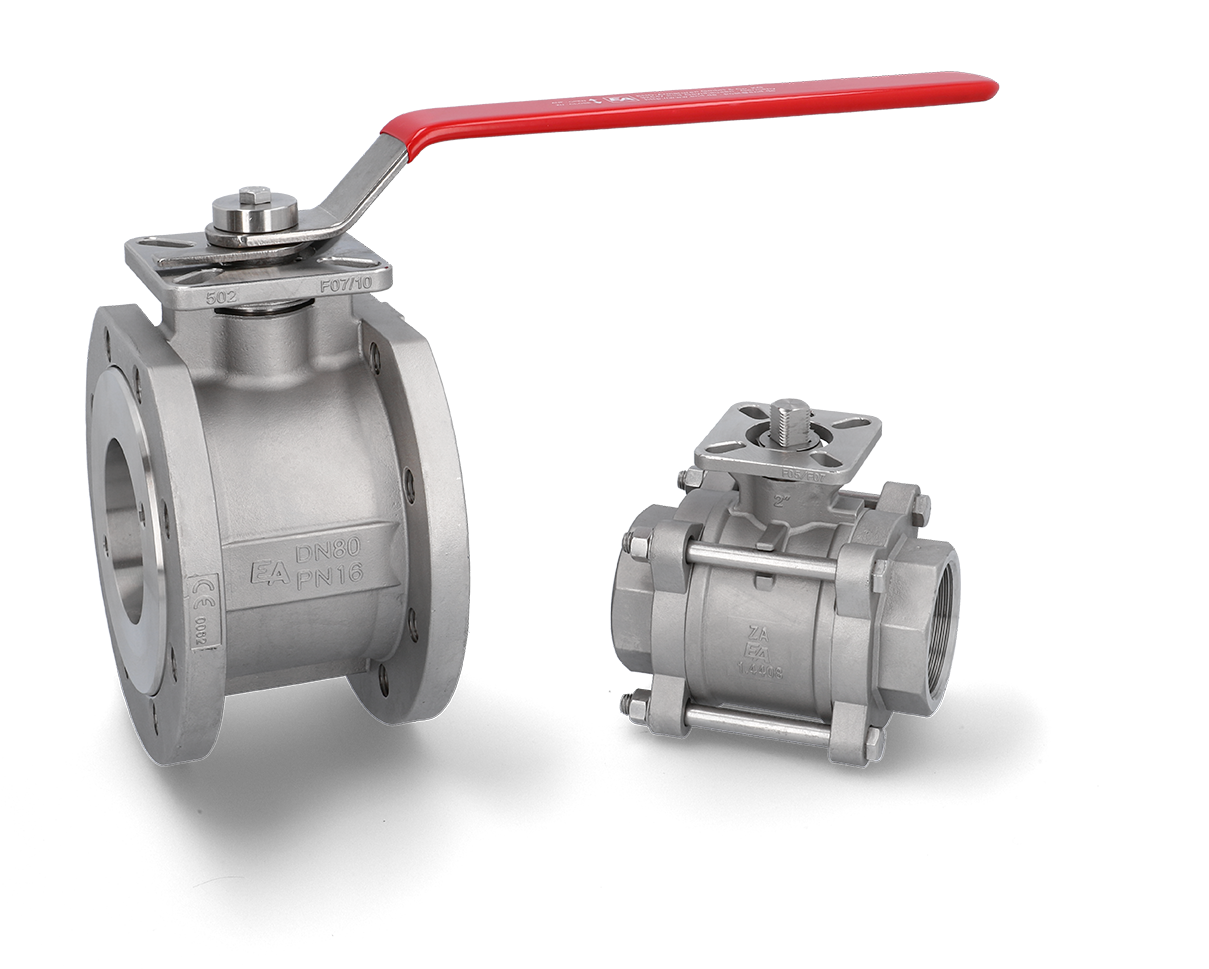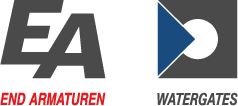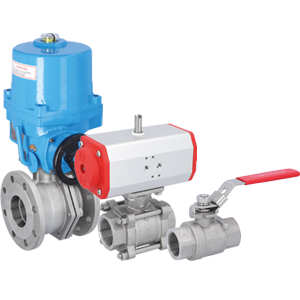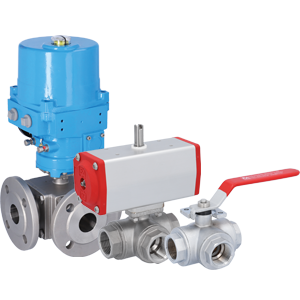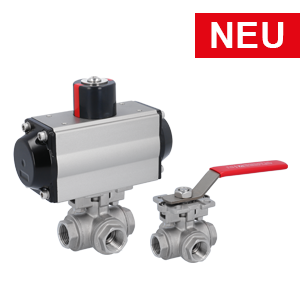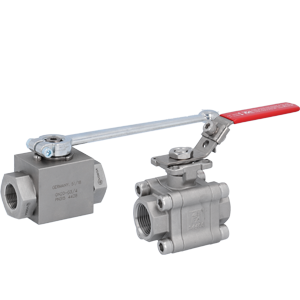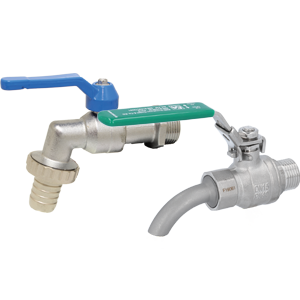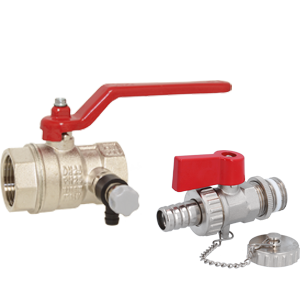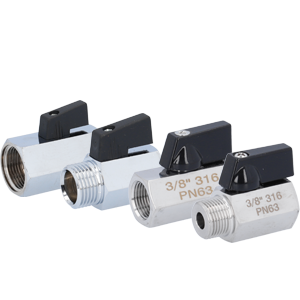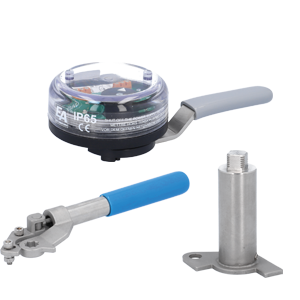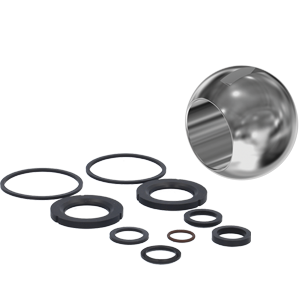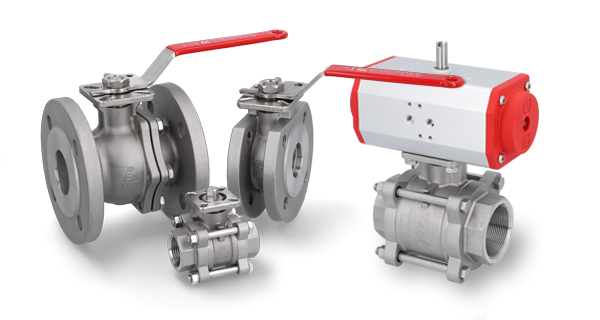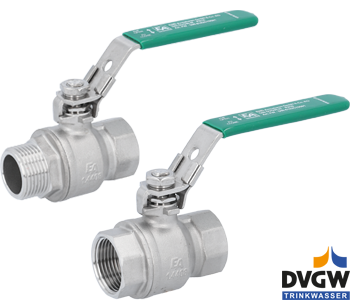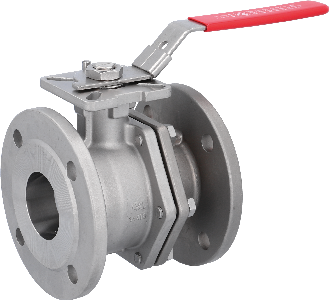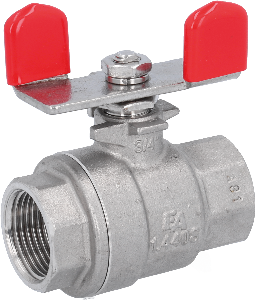Technical Information
The functioning of a ball valve
Ball valves are valves for shutting off (2-way ball valves) pipe systems and containers or for diverting or splitting a media flow. (3-way or multi-way ball valves). The drilled ball is brought into the desired position by turning it 90°. The turning movement can be done manually with a hand lever or pneumatically (single-acting with spring-return, double-acting) or electrically with an actuator.
Sizes and nominal diameters
The ball valves are manufactured in the nominal sizes DN4 up to DN1000. Standard sizes are DN10 up to DN300 for flanged ball valves or ¼" up to 6" for ball valves with threaded or welding ends. In the END-Armaturen online shop, you have the option of selecting the nominal diameters of the ball valves to suit your application.
Design features
Ball valves are available in different designs. At the body construction, there is a distinction between 1-piece, 2-piece and 3-piece designs. Fully welded ball valves are also used in district heating.
One-piece ball valves usually have a reduced bore and are therefore very inexpensive. Ball valves with a two-piece body construction are used most frequently, which compared to ball valves with thired-piece body construction, however, have the disadvantage that the seals cannot be changed or can only be changed with great effort.
Materials
Body materials are often brass, steel (GSC), ductile iron (GGG), stainless steel in a wide variety of alloys (1.4301, 1.4408, 1.4401, 1.4571), but also plastics such as PVC, PP or PVDF. The balls are also made of these materials, but often with additional surface coatings such as nickel plating or chromium plating. Materials are also available for special applications such as bronze, aluminum bronze, Hasteloy, etc.
PTFE (RTFE) is mainly used as the sealing material, depending on the application also glass fiber or carbon reinforced. For abrasive media or high media temperatures metal-sealing ball valves are also used.
Connection types
The connection types are versatile. These are available with threaded ends according to DIN 2999, ISO 228, ISO 7/1RP, EN 10226-, BSP EN 10226-1, for the American market also with NPT threads according to ASME/ANSI B20.1.
Welding ends according to DIN 3239, ISO 4200 or else DIN EN 10357 (formely DIN 11850) for the food industry.
With the flanges, a distinction is made according to EN 1092-1 (formerly DIN 2501) according to the flange dimensions for PN10, PN16, PN40, PN64 etc. or according to the American standard ANSI -ASME16.5 class150, class300, class600 etc.
Overall length (face to face)
Depending on the type of connection, the overall lengths are also standardized. For flange valves, the overall length EN558-1 (formerly DIN3202 F1, F4, F5 or DIN3202 K1 for wafer-type ball valves) is used.
EN16722 (formerly DIN3202-M3) for ball valves with female thread and EN12982 (formerly DIN3202) for ball valves with welding ends.
However, ball valves are also manufactured according to in-house standards with deviating overall lengths. Here, for example, compact ball valves, which have a smaller installation dimension than the ball valve with DIN overall length and therefore also a smaller dead space in the line.
Typical application and use of ball valves
Ball valves are used in almost all production, municipal areas and building services systems. Examples are the beverage and food industry, water treatment, systems for renewable energies (e.g. biogas, biodiesel, solar systems), building technology, laundry technology, marine applications and well construction.
Further application
- Beverage industry
- Food industry
- Sanitary installation
- Heating systems
- Drinking water installation
- Process industry
- Solar industry
- Industrial and building technology
Testing and approvals
Test certificates according to DIN EN 10213 2.2 or 3.1 are available for almost all ball valves. However, approvals and approvals for special applications are also possible. For example DVGW for gases or drinking water, TA-Luft certification according to DIN EN ISO 15848-1 or VDI 2440, antistatic according to BS 5146 – ISO 7121, fire safe according to BS 6755-T2 or ISO 10497.
Applications for explosive atmospheres according to ATEX also belong to the application areas.
